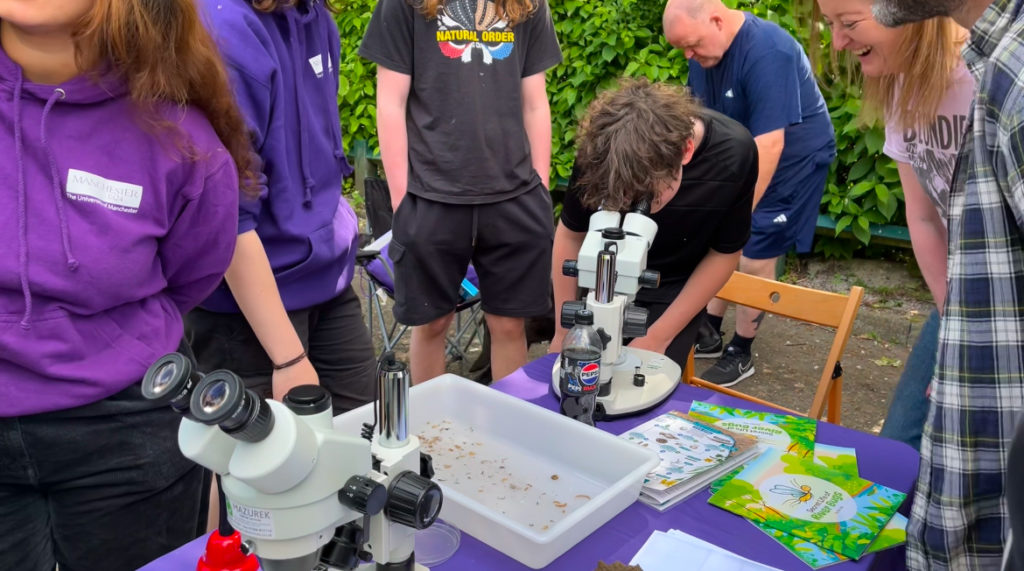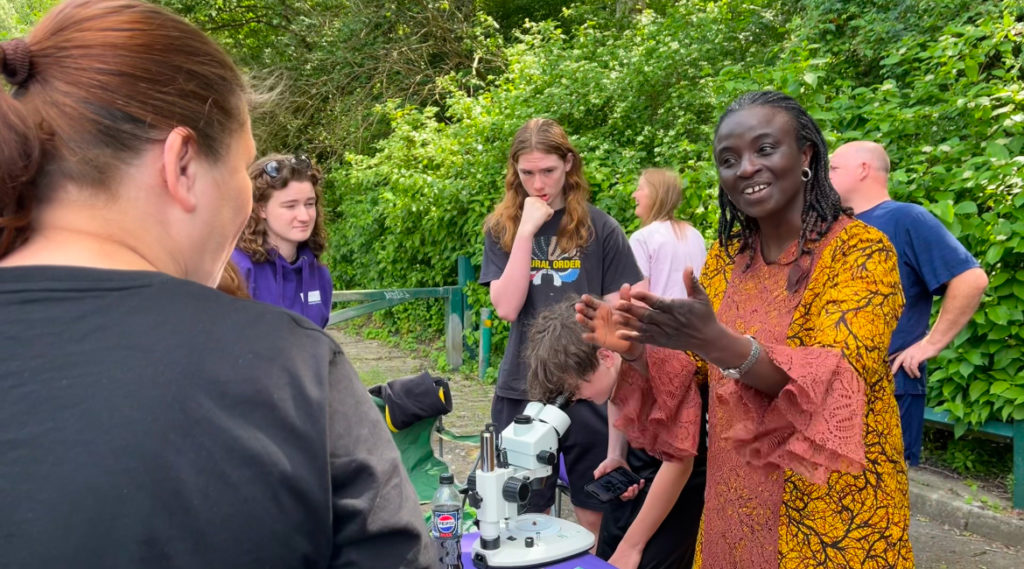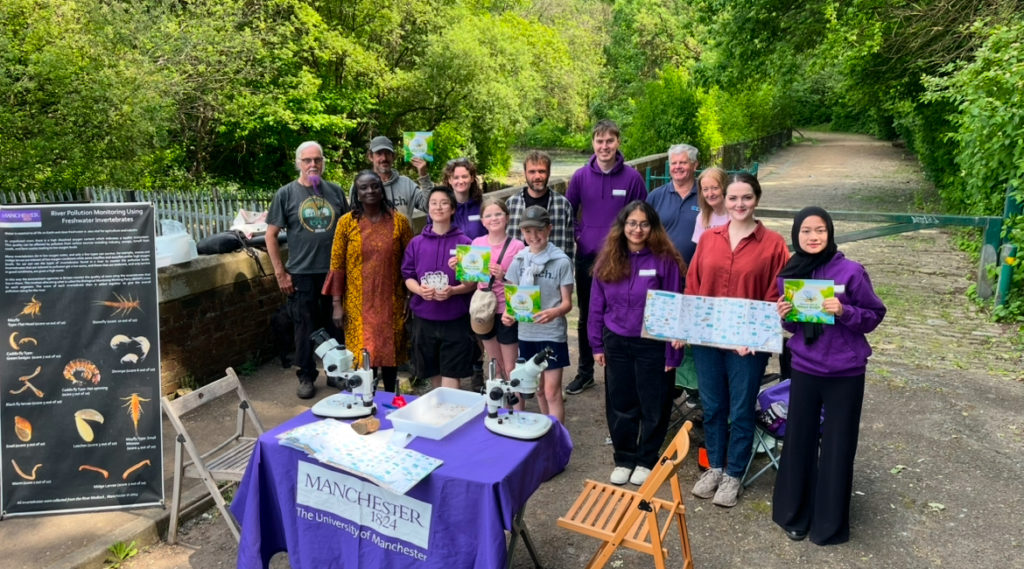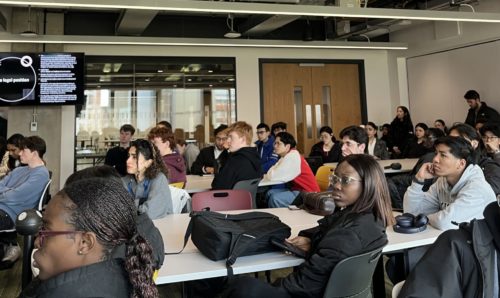Bugs by the Riverbed: The Medlock’s Watery World
Outreach SEES Social responsibility 1st August 2025
To understand a river, you have to look closer – beneath the surface, beyond the obvious – into the life it quietly sustains. In the heart of Manchester lies one of the city’s lesser-known landscapes: the Medlock Valley. A former industrial corridor, it is now steadily transforming into a peaceful stretch of mature woodland, wildflower meadows and riverbank paths.
On Saturday 10 May, this setting became the site of a public outreach workshop that invited attendees to look deeper – quite literally – into the waters of the River Medlock to discover the extraordinary lives teeming just below the surface, and the ecosystem they help sustain.

Organised by the University of Manchester’s Dr David Bailey in collaboration with Friends of Medlock Valley, the event was led by ecologist Dr Cecilia Medupin, alongside a team of undergraduate and postgraduate student ambassadors. With microscopes set up by the river, freshwater invertebrate identification guides available, and children’s science storybook on freshwater invertebrates (produced by one of our students), the workshop welcomed 25 attendees for an afternoon of environmental learning, discovery, and ecological exploration. The visitors ranged from 9-year-olds to professionals in their 50s.
Dr Medupin explained to attendees the important roles these river organisms play in delivering diverse ecosystem services. In particular, she highlighted their use as indicators of pollution and their intrinsic value as sources of beauty, wonder and scientific inspiration. These often-overlooked riverbed creatures possess unique features that not only captivate our imagination but also remind us of the importance of appreciating and protecting biodiversity.
Participants examined freshwater invertebrates collected directly from the Medlock. These small organisms, affectionately referred to as “bugs” by younger visitors, play a crucial role in assessing river health. Some organisms such as the flathead mayfly larvae, which rank 10 out of 10 on the pollution sensitivity scale, were especially notable. Their presence signals high water quality, whereas other taxa, like certain worms and midges, may tolerate more polluted conditions, ranking far lower on the scale.

Using the Freshwater Biology Association freshwater name trail and microscopes, attendees learnt to distinguish these types of organisms to explore what biodiversity reveals about local environmental conditions. Discussions flowed naturally as attendees asked: why do some bugs survive, while others disappear? What does this tell us about pollution levels? How can we protect these ecosystems?
Although the event offered an open and informal space for science communication about river organisms and water quality, its deeper purpose was to prompt people to notice what is so often overlooked. It aimed to rekindle a sense of connection – with place, with science, and with each other.
Attendees’ feedback captured the spirit of the day, with some of the comments including:
- “Very well set up.”
- “Everyone is lovely and friendly.”
- “I had no idea bugs could tell you if a river is clean – this is fascinating!”
- “Love to see the local community engaging with the University of Manchester. Exactly what universities were invented for – connecting with the community and making science accessible”.

In addition to the feedback gathered from the flip chart and oral comments, words such as community, joy, friendliness, awareness, unique life underwater, and inspiration captured the spirit and atmosphere of the day’s engagement.
This workshop was made possible thanks to the continued efforts of Friends of Medlock Valley, whose mission is to help revitalise this part of Manchester into a thriving, ecologically rich green space. As children and adults marvelled at the minute details of a caddisfly larvae under a lens, it became clear: when we look more closely, we begin to understand more deeply. In addition, when we understand, we begin to care. By protecting these small, often-hidden components of our ecosystems, we take a vital step toward safeguarding the health of the environments we all share.
By Deepanshi Karwall and Cecilia Medupin
Earth and Environmental Sciencesoutreachsciencesocial responsibility




